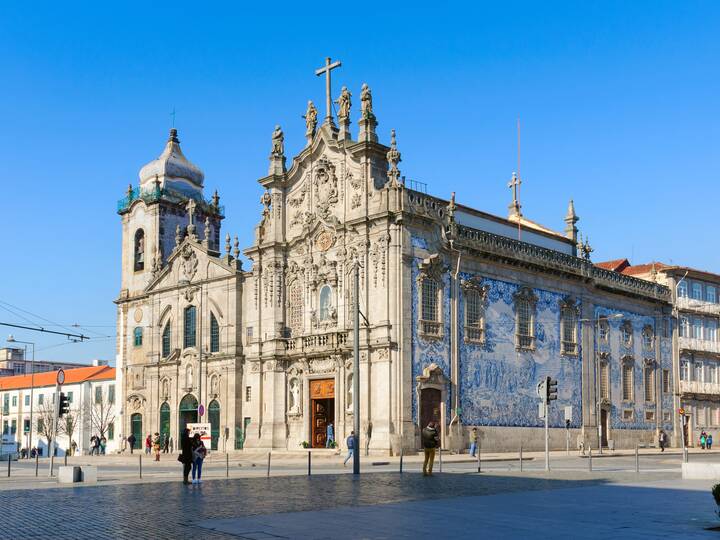
Itinerary
Day 101.04.2025Tuesday

Elevador De Santa Justa
Looming somewhat incongruously over the rooftops of Lisbon's downtown district is the odd-looking Santa Justa Lift, a neo-Gothic elevator and the most eccentric and novel means of public transport in the city. At first glance, its riveted wrought-iron frame and battleship-grey paint conjure images of the Eiffel Tower in Paris, and there is a connection: the French architect Raoul Mésnier du Ponsard, an apprentice of Gustave Eiffel, designed the elevator, which was inaugurated in 1901. It was built as a means of connecting the Baixa with the Largo do Carmo in the Bairro Alto neighborhood, a trendy area of the city peppered with expensive shops, Fado houses, and small restaurants.

Chiado
Alışveriş yapmak ve kafelerde oturmak için harika bir yer olan Chiado, tarihi ve modern mimarinin bir kombinasyonunu sunuyor.

Carmo Convent
Ruined Gothic church destroyed by an earthquake in 1755, with an evocative roofless nave & museum.

Igreja do Carmo
The skeletal ruins of the Carmo church are among the most evocative of all Lisbon's historical monuments. Built to an almost exclusive Gothic design, this Carmelite treasure was constructed between 1389 and 1423. Resplendent with its adjacent convent, Carmo was once the city's most distinguished church. But on the Sunday morning of November 1, 1755, which happened to be All Saints' Day, a devastating earthquake struck the Portuguese capital. The violent tremors almost destroyed most of the building, and hundreds of worshippers perished under falling masonry.

Rossio Meydanı

Bairro Alto
Hareketli barları ve gece hayatıyla ünlü olan bu semt, Lizbon'un en popüler bölgelerindendir.

Tram 28
Tram 28 is one of Lisbon's most iconic attractions, offering a nostalgic journey through the city's historic neighborhoods. This classic yellow tram traverses a scenic route from Martim Moniz to Campo de Ourique, passing landmarks like the Alfama district, São Jorge Castle, and the Basilica da Estrela. Loved by both tourists and locals, Tram 28 provides a unique perspective on Lisbon’s hills and winding streets, blending charm with convenience.

Bica Funicular

Avenida da Liberdade
A wide boulevard lined with luxury shops, cafes, and theaters, perfect for a leisurely stroll.
9 Places
Day 202.04.2025Wednesday

Arco da Rua Augusta
Lisbon's huge riverfront square, Praça do Comércio, is impressive enough seen from the ground, but it's only when viewed from the Arco da Rua Augusta that its vast dimensions can really be appreciated. The landmark 19th-century arch lies at the northern edge of the concourse near the southern tip of Rua Augusta, the city's main pedestrianized thoroughfare. Designed by Portuguese architect Santos de Carvalho and built to mark the reconstruction of the capital after the 1755 earthquake, the monument was inaugurated in 1873.

Praça do Comércio
Waterside public plaza with a notable arch & statue, lined with outdoor cafes & shopping venues.

Lisbon Cathedral
Earthquakes have led to this cathedral being rebuilt many times in different architectural styles.

Alfama Mahallesi
Lizbon'un en eski semti olan Alfama, dar sokakları ve renkli evleri ile ünlüdür. Burada kaybolmak, şehrin ruhunu yakalamak için harika bir fırsattır.

Sé
In the city's Castelo district near the ancient Alfama neighborhood, Lisbon's fortified Romanesque cathedral – the Sé – has undergone several design makeovers since the original structure was consecrated in 1150. A series of earthquakes culminating in the devastating 1755 tremor completely destroyed that which stood in the 12th century. What you see today is a blend of architectural styles, the standout features being the twin castellated bell towers that embellish the downtown skyline – particularly evocative in the late afternoon when a setting sun burnishes the brickwork with a golden veneer.

History of Lisbon Mural by Nuno Saraiva

Beco da Bicha
7 Places
